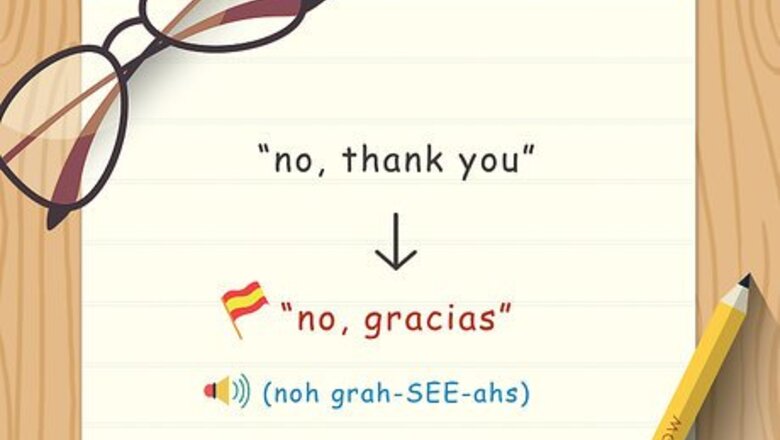
views
X
Research source
Telling Someone "No"
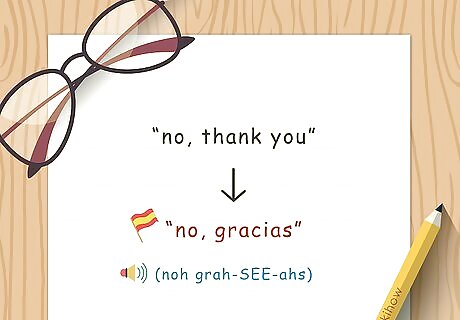
Say "no, gracias" (noh grah-SEE-ahs) to refuse an offer. When speaking to someone in Spanish, you want to be polite. Instead of just saying "no," add a "gracias" (thank you) at the end. Some Spanish speakers will simply say "gracias" to mean no. Pay attention to their tone and body language if you find this confusing. They may hold up a hand or shake their head as they say it.
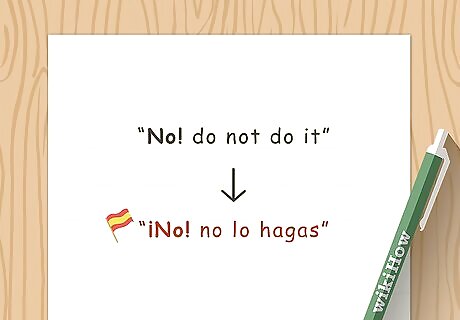
Use "¡No!" alone as an interjection. There may be occasions when politeness is either unwanted or unnecessary, and you need to refuse something more forcefully. This interjection also may be used when talking to friends. For example, suppose a Spanish friend is telling you a funny story about an incident at a party the night before. You might interject "¡No!" to imply that you find their story amazing or shocking.
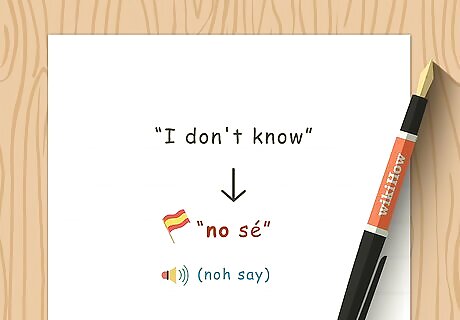
Say "no sé" (noh say) to mean "I don't know." No sé is a common phrase that everyone will understand. When you're just learning Spanish, it can come in handy if you don't understand what a person is saying.
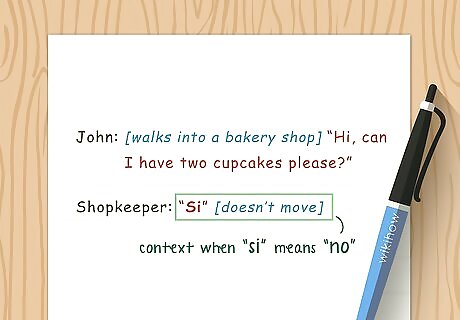
Recognize contexts when si is used to mean no. In some Spanish-speaking countries, particularly in Mexico, you may hear someone say si (yes) when they actually mean no. This is typically out of politeness. For example, you might go into a bakery and ask if you can purchase two cupcakes. The shop owner replies "si" without moving from her spot. You're expecting her to get the cupcakes for you, but actually she has no cupcakes ready. Asking questions will reveal what she means. Be aware that some Spanish speakers will do this, but try not to do it yourself. If you mean no, make it clear with the actual word.
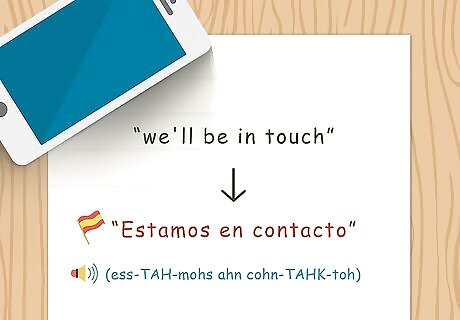
Say "estamos en contacto" (ess-TAH-mohs ahn cohn-TAHK-toh) in Mexico. If you're offered something by a salesperson or a business associate, they may continue to offer it if you simply say "no" or "no, gracias." This phrase will end the exchange and signal that you want them to leave you alone. Estamos en contacto means "we'll be in touch." This is a phrase that is generally understood to mean the exact opposite – that you won't be contacting the person and aren't interested in whatever they're offering.
Learning Other Negative Words

Use nadie (NAH-dee) to mean "nobody." The word nadie is only used when talking about people. You can combine it with the word no. Use it by itself immediately before the verb to start a sentence. For example, you might say "No hay nadie aquí" or "Nadie hay aquí." Either means "There's nobody here."
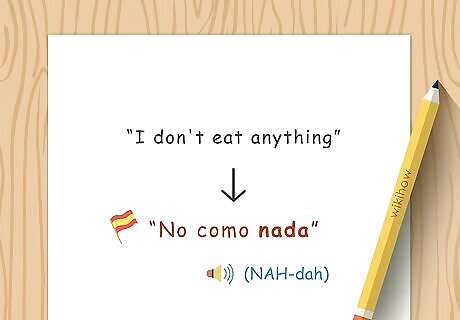
Try nada (NAH-dah) when you want to say "nothing." You may already be familiar with this common, basic Spanish word. You'll use it most frequently as a response when someone thanks you. When someone says "gracias," the most common response is "de nada," which means "it's nothing." In this context, it's translated to mean "you're welcome." Nada is also used in any context to mean "nothing." For example, you might say "No como nada" to mean "I don't eat anything" or "I eat nothing."
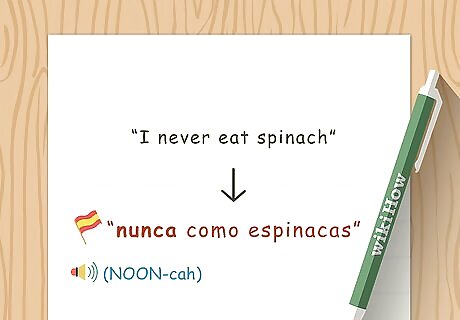
Use nunca (NOON-cah) to mean "never." If you want to say that you never do something, or that something never happens, the word nunca is your best choice. You can use it with the word no, or by itself directly before the verb. For example, you might say "nunca como espinacas" to mean "I never eat spinach." You also might use the word jamás, which also means "never." While the two words can be used interchangeably, jamás is a little more intense.
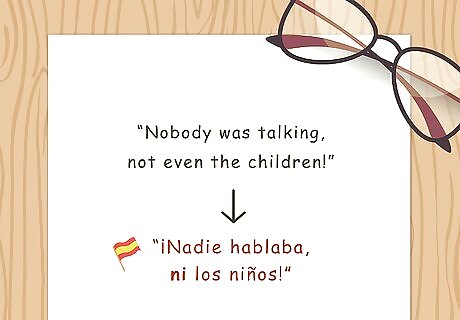
Say ni (nee) to mean "neither" or "nor." When you mean to say "neither... nor," simply repeat the word ni twice. When you use the word ni only once, it's an intensifier similar to the English phrase "not even." For instance, you could say, “No compré ni camisetas ni pantalones,” meaning, “I bought neither shirts nor pants.” Alternatively, you might say, "¡Nadie hablaba, ni los niños!" or "Nobody was talking, not even the children!"
Creating Negative Phrases
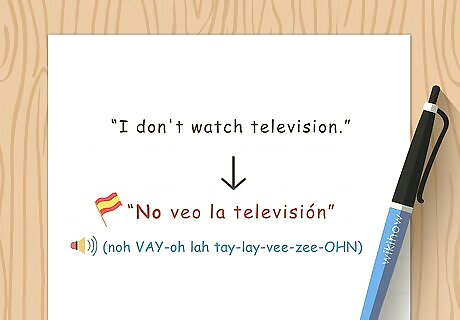
Include the word no in front of a verb. When you want to say that something is not done in Spanish, all you have to do is put the word no directly in front of it. Generally speaking, there won't be any other words between the word no and the verb. For example, suppose someone asked you if you liked a particular TV show, but you don't ever watch television. You might respond "No veo la televisión" (noh VAY-oh lah tay-lay-vee-zee-OHN) or "I don't watch television." Unlike English, there is not a separate word that means "not," nor is the word no combined with a verb to form a contraction (as with "don't").
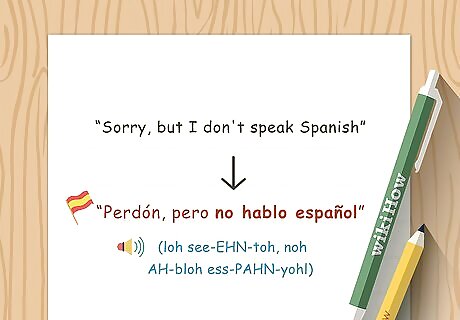
Tell someone you don't speak Spanish by saying "Lo siento, no hablo español" (loh see-EHN-toh, noh AH-bloh ess-PAHN-yohl). Using the basic rule to create a negative phrase, place the word no in front of the conjugated verb hablo. The phrase means "I'm sorry, I don't speak Spanish." You also might say "Perdón, pero no hablo español" (pehr-DOHN, PEHRR-oh noh AH-bloh ess-PAHN-yohl), which means "Sorry, but I don't speak Spanish."

Say "no" twice when responding to a question with a negative. In Spanish it is customary to say "no" once to answer the yes/no question, and then again in the sentence itself. The second "no" goes with the verb. For example, if someone asked you "¿Habla usted español?" and you don't speak Spanish, you would reply "No. No hablo español" (Noh. Noh AH-bloh ess-PAHN-yohl).
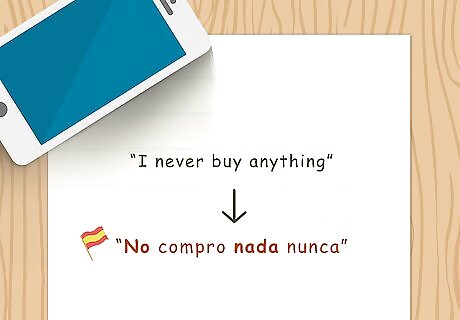
Combine negative words with the word no. Unlike in English, Spanish uses a double negative. It's grammatically correct to use the word no even with another negative word such as "nadie" (nobody) or "nada" (nothing). For example, you might say "no quiero ni pizza ni pasta," or "I want neither pizza nor pasta." You also might say "no quiero nada" to mean "I don't know anything" or "I know nothing." Sometimes you'll even use a triple negative. For example, you might say "No compro nada nunca," or "I never buy anything."
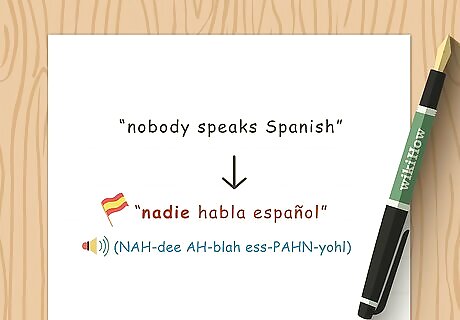
Leave out no when starting a sentence with a negative word. In Spanish, you can replace the word no with another word, such as nadie (nobody) or nada (nothing). Despite the common use of the double negative, adding the word no in this context is incorrect. When you do this, the other negative word must come directly before the verb. For example, you might say "nadie habla español" (NAH-dee AH-blah ess-PAHN-yohl) or "nobody speaks Spanish."
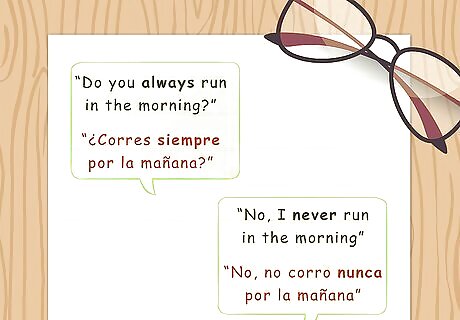
Change indefinite words to negative words to negate them. Spanish has indefinite words such as "alguien" (somebody) or "siempre" (always). Unlike in English, it isn't common to combine these words with the word "no." Match up indefinite words to their corresponding negative words. For example, the negative version of "alguien" (somebody) would be "nadie" (nobody). For example, if someone asked you "¿Corres siempre por la mañana?" (Do you always run in the morning), you might respond "No, no corro nunca por la mañana" (No, I never run in the morning).















Comments
0 comment